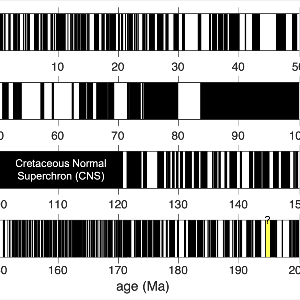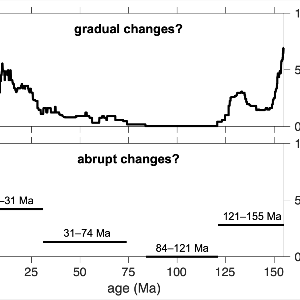
© Florian Lhuillier
Florian Lhuillier from LMU will present his research in a talk entitled "Detecting geodynamo regimes in the palaeomagnetic record". The lecture will be held in English.
ECS co-host this time is (tba).
The DeepDyn seminar takes place online as a zoom-meeting. DeepDyn members will automatically receive the access link before the seminar. We ask external seminar guests to register for the seminar in order to receive the access link.
Detecting geodynamo regimes in the palaeomagnetic record

Abstract
Over geological time, the geomagnetic field—generated by a dynamo in the Earth’s fluid outer core—significantly varied its rate of polarity reversals, from prolonged periods (> 20 Myr) with stable polarity termed superchrons to episodes of hyperactivity with a reversal rate greater than 10 Myr–1. Described in first approximation by a geocentric axial dipole, the geomagnetic field also experienced directional fluctuations around its dipolar geometry (usually referred to as palaeosecular variation, PSV) as well as changes in the strength of its dipole moment. In this presentation, we will discuss how palaeomagnetic observations can be used to address the controversial issue whether the amplitude of PSV and the average dipole strength correlate with the rate of polarity reversals.

First, we will examine new palaeodirectional records from (i) sequences of lava flows emplaced at high palaeolatitude in Chukotka (NE Eurasia) before and after the end of the Cretaceous Normal Superchron (CNS, 84–121 Ma), and (ii) collections of lavas emplaced at mid palaeolatitude in Germany during the Cainozoic. They tend to confirm a distinct PSV regime of the geodynamo during the CNS but show an apparent decoupling between the amplitude of PSV and the reversal rate after the end of CNS. Second, we will present new absolute palaeointensity determinations acquired on baked sediments from Hainan (SE Asia). They are consistent with a stronger dipolar field during the CNS than during the early and late Cretaceous. However, we will also underline that the interpretation of the absolute palaeointensity database is ambiguous and largely depends on the choice of the selection criteria. Finally, we will report on the prospect of using a new approach based on the correlation between local geomagnetic field strength and inclination (angle made by the horizontal with the field lines) to detect dipolarity regimes of the geodynamo over the Earth’s history.
more informatation about the DeepDyn project of Florian Lhuillier
Link to the next seminar
with Juliane Dannberg (Geomar und Universität Kiel)
